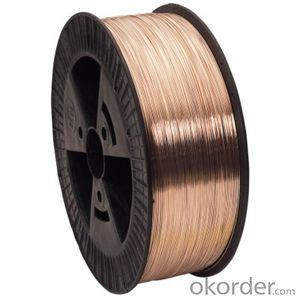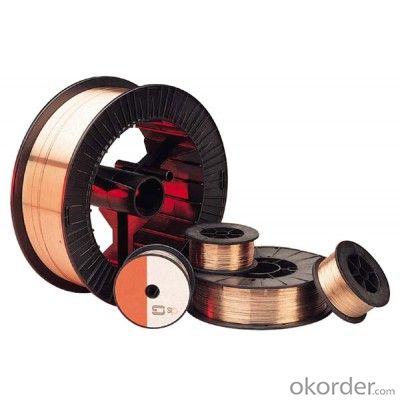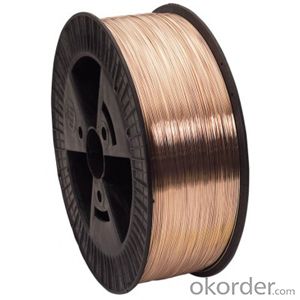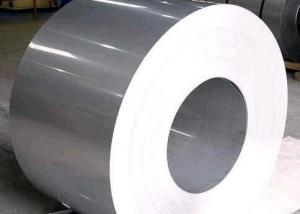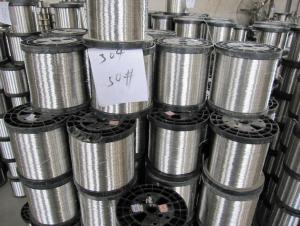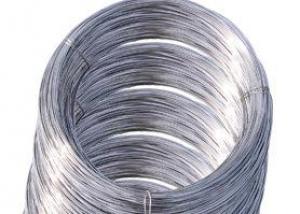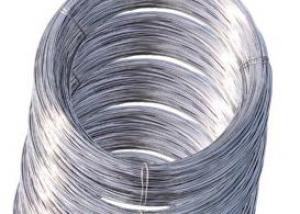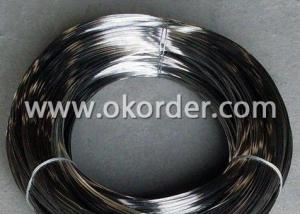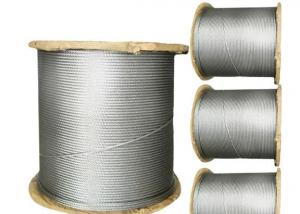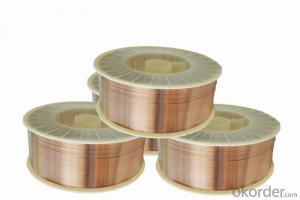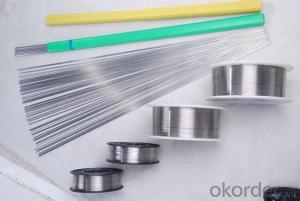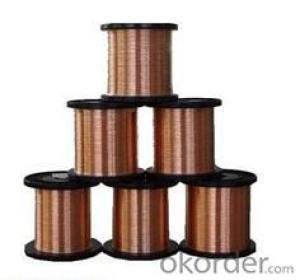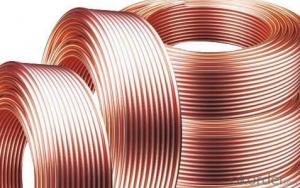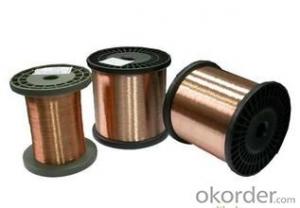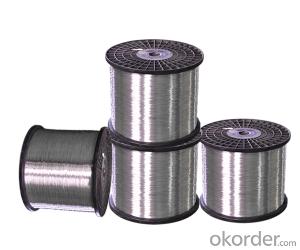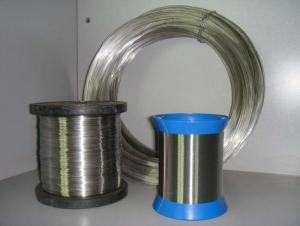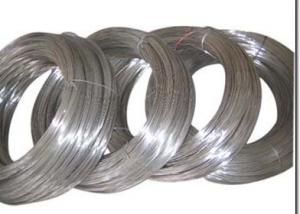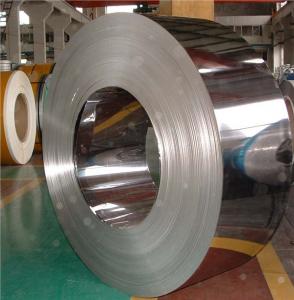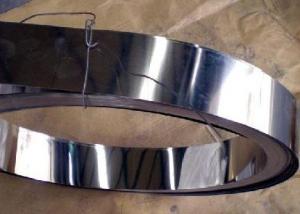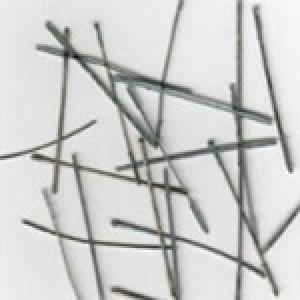MANGANESE STEEL WELDING WIRE WITH COPPER COATED
- Loading Port:
- Qingdao
- Payment Terms:
- TT OR LC
- Min Order Qty:
- 10 m.t.
- Supply Capability:
- 1000 m.t./month
OKorder Service Pledge
OKorder Financial Service
You Might Also Like
Specifications
All products of welding wire were produced by German equipment.
Advanced technologies with advanced equipment.
Gas-shielded welding wires utilize Co2,argon-rich gas and argon gas as the shielding gases with high production efficiency.Large current may be used during welding to achieve droplet transfer,wiht large melting coefficient of wire, excellent depth of welding penetration on material, little melting residues,high-density current, concentrated heat, small heating area, little distortion of work pieces after welding, etc.
Because of low content of hydrogen in the seam,cold cracking is rare. Good visibility of electric arc facilitates full-position welding and welding at other positions.
Main Applications:Welding of various 500Mpa structural steel components;welding of various 500Mpa plates and pipes;full-position welding with a wide range of current.
Chemical Compositions of one sample wire(%)
C 0.07 Mn1.47 Si0.86 P0.012 S0.010
Mechanical Properties
Gas: Co2
Yiels strength(Mpa): 467
Tensile strength(Mpa): 542
Elongation(%): 26
Impact Energy(J): 101(-30°c)
- Q: Is stainless steel wire flexible or rigid?
- Stainless steel wire is flexible to a certain extent, but it is generally more rigid compared to other types of wire. While it can be bent and shaped, it does not have the same level of flexibility as, for example, nylon or copper wire. Stainless steel wire is known for its strength and durability, making it less prone to bending or warping under pressure. However, it is important to note that the flexibility of stainless steel wire can vary depending on its diameter and tempering process. Overall, stainless steel wire strikes a balance between flexibility and rigidity, making it suitable for various applications in industries such as construction, automotive, and medical.
- Q: Is stainless steel wire suitable for heat exchangers?
- Yes, stainless steel wire is suitable for heat exchangers. Stainless steel is known for its excellent corrosion resistance and high-temperature strength, making it a suitable material for heat exchangers that operate in demanding environments. Additionally, stainless steel wire offers good thermal conductivity, ensuring efficient heat transfer in the heat exchanger.
- Q: What are the different types of stainless steel wire rope lubricants available?
- There are several different types of stainless steel wire rope lubricants available in the market. These lubricants are specifically designed to enhance the performance and durability of stainless steel wire ropes. 1. Dry Film Lubricants: These lubricants create a thin film on the surface of the wire rope, reducing friction and preventing wear and tear. They are commonly used in industries where cleanliness is crucial, such as food processing or pharmaceuticals. 2. Wax-based Lubricants: Wax-based lubricants provide a protective coating to the wire rope, preventing moisture and corrosion. They are especially effective in outdoor applications or environments with high humidity. 3. Graphite Lubricants: Graphite lubricants contain graphite particles that create a slippery surface on the wire rope, reducing friction and preventing galling. They are often used in heavy-duty applications or in situations where extreme temperatures are involved. 4. Oil-based Lubricants: Oil-based lubricants provide excellent lubrication and corrosion protection. They penetrate deep into the wire rope strands, ensuring smooth operation and preventing rust or corrosion. 5. PTFE-based Lubricants: PTFE-based lubricants, also known as Teflon lubricants, offer exceptional lubricity and are highly resistant to moisture and chemicals. They provide long-lasting protection and reduce friction, thus extending the life of the wire rope. 6. Silicone-based Lubricants: Silicone-based lubricants are known for their water-repellent properties and resistance to extreme temperatures. They offer excellent lubrication and protection against rust and corrosion. It is important to choose the right stainless steel wire rope lubricant based on the specific application and conditions. Factors such as temperature, moisture, load, and environmental factors should be considered when selecting the most suitable lubricant for the wire rope. Regular lubrication and maintenance are also essential to ensure the optimal performance and longevity of stainless steel wire ropes.
- Q: Can stainless steel wire be used for structural purposes?
- Yes, stainless steel wire can be used for structural purposes. Stainless steel is known for its high strength, durability, and corrosion resistance, making it suitable for various structural applications such as in construction, bridges, and support structures.
- Q: 304 stainless steel wire drawing why rust?? long rust what is the reason?
- 1, stainless steel is one of the reasons for the rust is the surface of 400# finish, drawing damage to the finish, so rust2, and there is the drawing equipment, may contain carbon elements, rust after contact
- Q: Is stainless steel wire suitable for wire stripping?
- Yes, stainless steel wire is suitable for wire stripping. It is a durable and corrosion-resistant material that can be easily stripped using appropriate tools and techniques.
- Q: What are the different types of stainless steel wire baskets?
- There are several different types of stainless steel wire baskets available, each designed to serve specific purposes and meet different needs. Some common types include: 1. Open mesh baskets: These baskets have a mesh-like structure with evenly spaced wires, allowing for maximum visibility and airflow. They are commonly used in applications where items need to be rinsed or cleaned, such as in the medical or food industry. 2. Solid-sided baskets: These baskets have solid sides without any mesh or openings. They are ideal for holding smaller items or preventing smaller parts from falling out during transportation or storage. Solid-sided baskets are often used in manufacturing or industrial settings. 3. Parts washing baskets: These baskets are designed specifically for washing or cleaning small parts or components. They typically have a fine mesh or grid pattern to prevent parts from falling out or getting damaged during the cleaning process. Parts washing baskets are commonly used in automotive, aerospace, or electronics industries. 4. Tray-style baskets: These baskets have a flat, tray-like structure with shallow sides and an open top. They are suitable for carrying or storing items that need to be easily accessible, such as tools, utensils, or medical supplies. Tray-style baskets are often used in healthcare facilities, laboratories, or workshops. 5. Stackable baskets: These baskets are designed to be easily stacked on top of each other, maximizing storage space. They often have interlocking features or built-in handles for easy stacking and handling. Stackable baskets are commonly used in retail, logistics, or warehouse environments. 6. Adjustable or collapsible baskets: These baskets have a flexible structure that allows them to be adjusted or collapsed to different sizes or shapes. They are versatile and can be used for various applications, such as holding irregularly shaped items or fitting into tight spaces. Adjustable or collapsible baskets are often used in storage, organization, or transportation purposes. These are just a few examples of the different types of stainless steel wire baskets available. Choosing the right type depends on the specific requirements and intended use of the basket.
- Q: What are the different constructions of stainless steel wire mesh?
- There are several different constructions of stainless steel wire mesh, including plain weave, twill weave, Dutch weave, and reverse Dutch weave. Each construction has its own unique characteristics and is suitable for different applications.
- Q: What is the tensile strength of stainless steel wire?
- The tensile strength of stainless steel wire can vary based on factors such as the specific grade or alloy used, as well as the manufacturing process and any heat treatment applied. Nevertheless, stainless steel wire generally possesses a high tensile strength. For instance, stainless steel wires like 304 and 316, which are commonly used, exhibit a tensile strength that ranges from approximately 550 MPa to 750 MPa (79,770 psi to 108,775 psi). This impressive tensile strength renders stainless steel wire suitable for a wide range of applications that necessitate both strength and resistance to corrosion. It is worth mentioning that the tensile strength can be further improved through specialized processing or alloy modifications in order to meet specific application requirements.
- Q: Why are the 304 stainless steel wires magnetic? And the thinner the wire, the greater the magnetism
- Generally speaking, stainless steel has magnetism and also has no magnetism. The austenite is nonmagnetic or weakly magnetic, such as 201, 202, 304, 316, etc. the martensite or ferrite is magnetic, such as 430, 420, 410, etc..
Send your message to us
MANGANESE STEEL WELDING WIRE WITH COPPER COATED
- Loading Port:
- Qingdao
- Payment Terms:
- TT OR LC
- Min Order Qty:
- 10 m.t.
- Supply Capability:
- 1000 m.t./month
OKorder Service Pledge
OKorder Financial Service
Similar products
Hot products
Hot Searches
Related keywords

